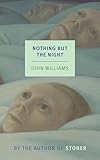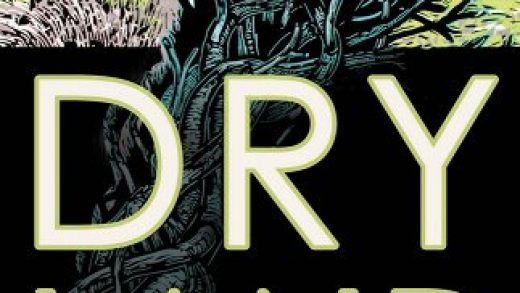In retrospect, it’s easy to look at the life and career of John Williams and see a disconnect. Here’s a writer who was in charge of the Association of Writers and Poets, who networked his way into the lit scene through small presses, and who won the National Book Award for his 1973 novel Augustus. He edited Denver Quarterly for years, and his sophomore novel, Stoner—and his career as a whole— has enjoyed a recent word-of-mouth resurgence of interest. How, then, could such a writer view himself as an outsider?
Charles J. Shields notes in his newly released Williams biography, The Man Who Wrote the Perfect Novel: John Williams, Stoner and the Writing Life, that “readers of histories and biographies have the advantage of knowing the end of the story, but to the person living it, the darkness is all around.” Shields shows readers the insecurity that drove Williams to excellence in his writing career. His determination to succeed as a writer led him to cut corners in his personal and professional lives, to the detriment of himself and others. Through exhaustive research and sharp prose, Shields has composed a portrait of the complicated author and the particular darknesses that drove Williams to write, to overcompensate, to philander, to mansplain.

Shields’s framing device is simple but effective: A woman named Anne Marie Candido answers a grant-funded ad to sort through Williams’s papers, allowing readers to sift through the author’s life as she does. Candido meets him, works with him, warms to him.
Almost immediately, a revelation surfaces: Little John Williams was a living lie. His mother, Amelia, had married a man named George Williams—but he was not John’s father, Amelia revealed when John was 9. John’s true father was John Edward Jewell, who had flipped a parcel of land for cash, and was then robbed and subsequently killed later in the day by a hitchhiker. Or not. Shields reveals that no newspaper account of this killing exists, no proof, despite Amelia’s insistence that she was a widow. Regardless, for little John Williams, “news that he was not the person he thought he was called into question the importance of telling the truth,” a thread that Shields expertly weaves throughout the rest of the biography.

John Williams enjoyed stories of all kinds, often reading magazines with his mother and stepfather around the light of a kerosene lantern. He saw a film adaptation of Charles Dickens’s A Tale of Two Cities and was smitten by the performance of the dashing Ronald Colman, whose pencil-thin moustache and ascot conveyed a worldliness and authority to the young Texas boy watching in the theater. Williams wrote an eighth-grade essay on Colman’s role as the novel’s Sidney Carton, and was lauded for his work—the first time, Williams later said, he was praised for anything.
Williams applied his aptitude for telling stories to his own life. He enlisted for World War II shortly after his marriage, and was assigned to a small airbase in India, near the Tibetan border. His duty as radioman was harrowing: the C-47 planes Williams flew in didn’t have enough power to elevate above the Himalayas, a terrifying prospect before the addition of winter ice muddied the navigation instruments’ control. Inevitably, Williams was shot down, breaking ribs when the plane fell, and narrowly evading a troop of Japanese soldiers. But, as Shields states, Williams’s name does not appear on any official flight documentation. Williams’s story about being shot down is no doubt based on actual anecdotes from soldiers, and is in that way believable, one of many instances of Williams telling stories to live up to a fictional image of self, referring back to the derring-do of Ronald Colman.

Williams’s marriage (the first of four) didn’t survive the war. He relocated briefly to Key West, then to California, where his mother ailed. While in California, he began pitching publishers with his first novel, Nothing but the Night, and fell into the orbit of Alan Swallow, owner and operator of Swallow Press. The tiny Denver-based operation is easily understandable in punk rock terms: Swallow kept his prices intentionally low to make his product more democratic; he was an advocate of regionalism and didn’t advertise, preferring the books to be found by discerning readers. It was Swallow who urged Williams to enroll at the University of Denver on the potential of Nothing but the Night. Williams was accepted. He became an associate editor of Swallow Press, reading submitted manuscripts from new and established authors.


One of these authors was Yvor Winters, who discussed his philosophy of “practicing rationality in art over feeling” in a Swallow Press release titled In Defense of Reason. This book was especially impactful on Williams, who was impressionably new to academia. Williams fell under the older author’s spell, adapting his anti-Romantic, pro-Renaissance stand. Flush with these newly absorbed ideas about Romanticism, Williams wrote Butcher’s Crossing, in which an East Coast transplant travels to a Wild Western town intent on striking it rich on buffalo hides. His party decamps to a hidden valley full of buffalo, kills them all, and is snowed in for the winter, a possibility they didn’t plan for. They lose all the buffalo hides months later when they return to the town, left abandoned after an overabundance of hides killed demand, and the market. With context and retrospect, the novel is an attack on the myths about the Wild West, influenced by Winters. Its fate, though, was sealed by a savage panning from The New York Times, which misconstrued the book as a Western, rather than a critique of romanticism about the Wild West.
To cope with the crushing review, Williams threw himself anew into the character he had constructed for himself, modeled after Ronald Colman. Shields says that “By fashioning himself as a cultured, sophisticated loner, like the Hollywood leading man of his youth, Ronald Colman, he restored his self-confidence.” Part of this renewed approach was immersion in the politics of University of Denver’s English department. The faculty was mostly male and operated with a level of misogyny and chauvinism that was sadly typical of the times. Shields pulls no punches in these depictions, later focusing on new faculty member Peggy McIntosh for discussion of the department and its gendered politics. It was McIntosh who coined the phrases “male privilege” and “white privilege” in her published work, and her account of the departmental interactions is a textbook instance of both. Williams is described as boorish and threatened by non-white male colleagues, with no sign of awareness about his behaviors. This narrow view extends to the larger literary scene, which is portrayed as a boys’ club.
Even this privilege could not protect him from scandal. Following the publication of Butchers’ Crossing, Williams pitched a textbook of romantic poetry to publishers, with the ulterior motive of highlighting the lesser-known poet Hulke Greville, on whom Williams had written his dissertation. By stoking Greville’s critical fires, Williams hoped to improve the chances of his dissertation being published. The assemblage of poets, however, was largely cribbed, uncredited, from the scholarship of Yvor Winters. According to Shields, “the overlap was about 80 percent.” Winters was angry about “the lack of attribution, which he believed was deliberate and typical of Williams.” In addition to what amounts to plagiarism, Shields discusses Williams as a textbook example of privilege, stating that “he had taken shortcuts since the beginning of his teaching career,” often delivering lectures culled from the work of his colleagues and passing the work off as his own as he devoted his energies to writing novels. Winters condemned Williams as arrogant, leaving the author again as an outsider.
Despite this, Williams soldiered on, weaving interdepartmental conflicts into the narrative of his own life in Stoner, the campus novel which since his passing has enjoyed a revival of interest. The novel’s titular protagonist continues Williams’s thematic exploration of the perils of romanticism. Like the author, William Stoner grew up on a farm. Through immersion in university life, Stoner is able to dissociate himself from the pastoral backdrop he came up in. Shields says that for Stoner, “language makes it possible for him to reach new consciousness. Words permit reasoning, which can be used to concretize elusive qualities of life.” The novel’s deliberate pace did not find the audience Williams hoped, nor did a rave review from the New Republic, leaving Williams again on the outside looking in.
Despite this, he continued teaching even after his plagiarism scandal. Williams started attending the prestigious Bread Loaf conference in 1968, where he continued networking with authors, adding new members to the literary boys’ club where he sought solace.
Through his Bread Loaf connections, Williams managed to get the rapidly out-of-print Stoner republished by a small press at around the same time as the publication of his novel Augustus, a polyphonic rumination on the titular emperor’s rise and fall. After its publication in 1972, Williams “took up a prominent spot in the English Department office, where he sat all day smoking and drinking coffee, expecting that some of his colleagues would congratulate him.” One of the many strengths of Shields’s biography is the duality with which it may be read: Depending on one’s outlook, Williams’s aggressive need for validation may be as a result of his upbringing—or it may be symptomatic of a typical white male privilege. Shields portrays Williams’s disappointment when things don’t go his way, and through anecdotes about his colleagues, depicts Williams’s seeming lack of metacognition about his position as a tenured professor, his large group of colleagues, even his talent.
One sees both sides of the coin when Augustus wins the National Book Award in 1973. The catch is that the judges couldn’t agree whether the honor should be bestowed on Williams’s book or on John Barth’s Chimera. The deciding panel, flummoxed, simply decided to split the award. Williams embarked on guest lecturer positions across the country. Back in Denver, his accomplishments were ignored by his colleagues because of his drinking, his lack of commitment to students, his philandering. Finally, the college invented an Endowed Chair title for him, asking only that he teach two of three quarters a year. Williams became increasingly less effective as a professor as health problems ravaged his lungs, retiring from teaching in 1985. He died of respiratory failure in 1994 while working on a novel titled The Sleep of Reason.
John Williams assumed a “carefully constructed identity” for himself, an outward projection of a literary swashbuckler like his hero Ronald Colman in A Tale Of Two Cities. Charles J. Shields’s The Man Who Wrote the Perfect Novel is similarly a tale of two John Williams: the one trying to live up to the fiction of self he invented, and the one oblivious to the fact that this fantasy does not come across in the intended manner.
The post Biography of a Man Who Wrote the Perfect Novel appeared first on The Millions.














